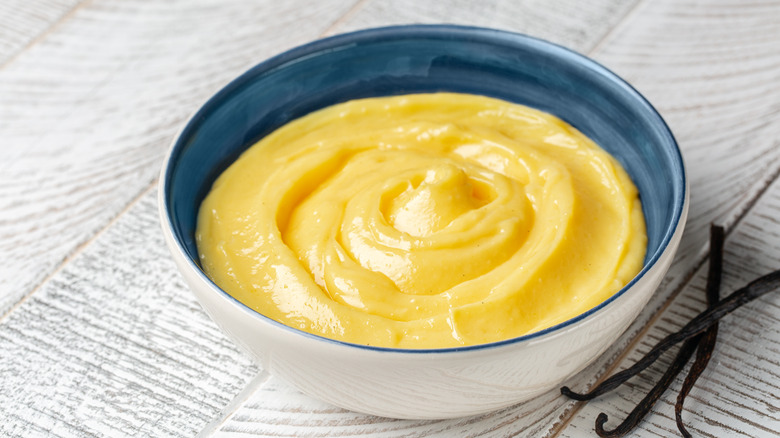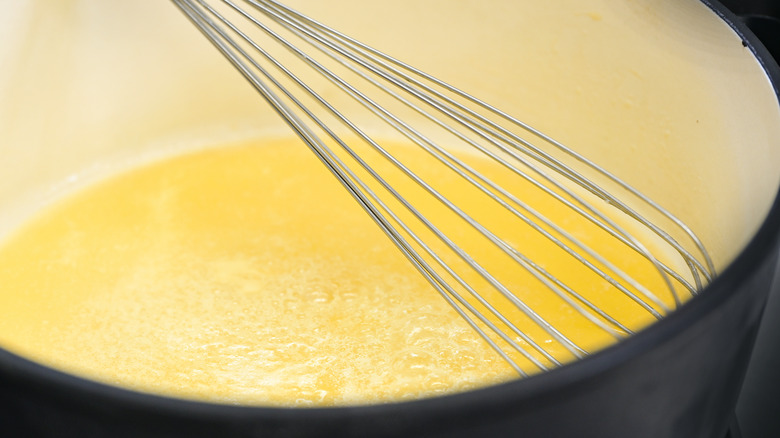The Instantaneous Fix For When Custard Is About To Scramble
For many home bakers, mastering a classic vanilla custard is a necessity. When done correctly, custard provides a delicious and versatile base for a wide range of desserts. Whether you're a fan of classic, caramelized crème brûlée, or like to spruce up your custard with the addition of chocolate, you're guaranteed a fail-safe treat. That is, so long as your custard doesn't curdle.
Unfortunately, the curdled custard is an age-old problem that comes with making an egg-based dessert. Custard tends to scramble once the heat gets involved and can therefore prove tricky to master. You'll know your custard has scrambled once the mixture turns lumpy. This often happens as a result of overheating your liquid. But while curdled custard may seem like a lost cause, it doesn't have to be.
There are a few ways to redeem and even salvage custards that have scrambled. That's right bakers, you can exhale. You don't have to throw out your curdled custard and start from scratch. Rather, this simple trick can save even the lumpiest of custards. All it requires is a bit of planning and the ability to toy with temperature.
Cool the custard in cold water
Here's one trick that sounds way more complicated than it is. Once you notice your custard beginning to scramble, turn off the heat and douse the bottom of that hot custard pan in a vat of cold water. If you're nervous about your custard curdling, simply plan ahead of time. If you fill your sink with cold water before you even turn on your stove, you'll be ready to handle any and all curdling mishaps.
Fair warning, however. This trick can prove disastrous if you're not careful. To limit the risks of burning yourself or breaking a pan, make sure to wear oven mitts and avoid using a pan with glass. Glass pans can shatter when exposed to temperature extremes. So, as long as you act carefully, you can easily pull off this trick and pull off a delicious and smooth custard.
Once you've cooled the custard with water, you can take another step to limit lumps. Use a sieve or strainer to remove any scrambled pieces. With some practice and a little bit of time, you'll wind up with a smooth and creamy custard, ready for your coconut custard pie. If you'd rather forgo the whole fanfare, simply pour your custard into a bowl and grab a spoon. Without those curdled egg bits, why not eat the custard exactly as is?

